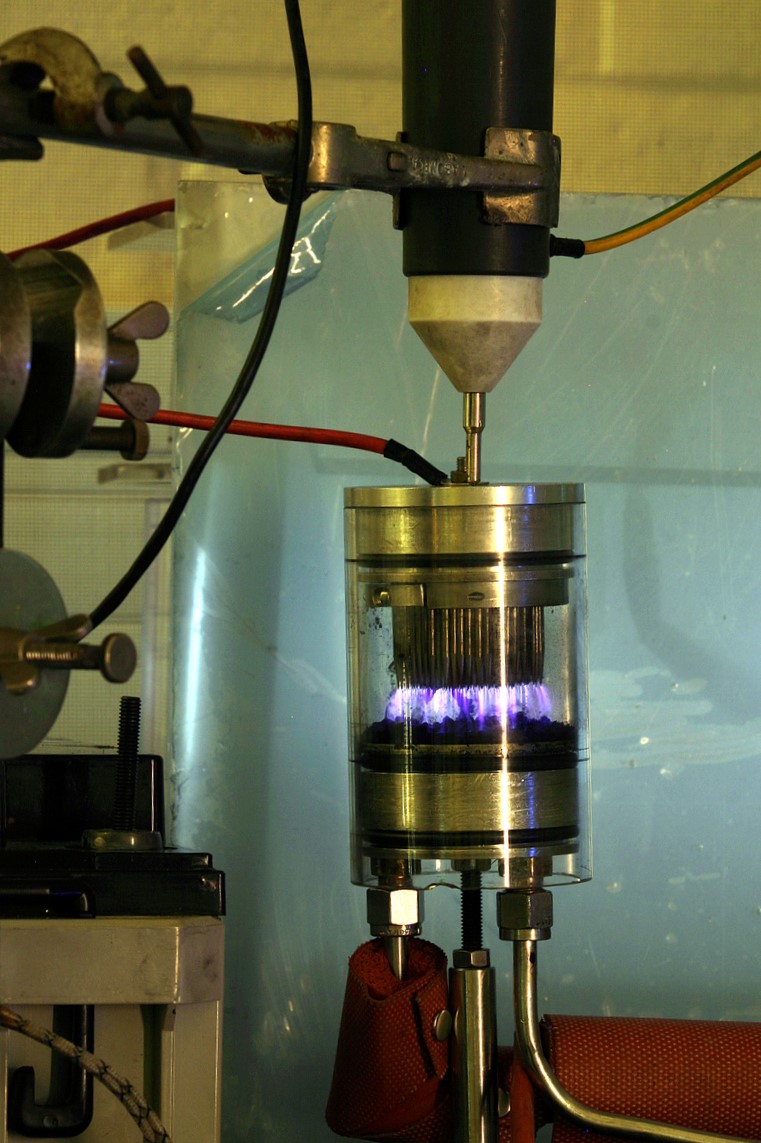Credits : France SIMONET/IRCELYON/CNRS Photothèque
Topic 5 :
Soot and the problem of particle filtration
Another extension of the GDR SUIE’s work concerns the problem of the filtration of particles resulting from combustion. For example, the tightening of Euro standards on pollutant emissions requires the widespread use of particle filters (PAF) on diesel vehicles. However, the introduction of new standards (Euro 6) requires that direct injection petrol vehicles also be equipped with a particle filter. The filtration efficiency of DPFs is real and allows the mass of soot retained to be reduced mechanically by more than 90%.
Nevertheless, the control of periodic regeneration by the presence of an oxidation catalyst remains to be optimised in order to avoid, on the one hand, over-consumption of fuel and, on the other hand, puffs of NO2 and particles. Finally, certain recent studies seem to show that PAFs favour the emission into the atmosphere of secondary organic aerosol precursors and fine particles (1-20 nm) of a size smaller than the current automobile standards (23 nm; in this respect, we would like to point out the involvement of GDR researchers in certain European projects whose objective is to create portable measurement systems in order to lower the standards to the 10 nm threshold, such as the PEMS4Nano, DownToTen and Sureal-23 projects). Today, these impacts of PAFs on air quality must be better characterised and understood, and the contribution in this sense of the work developed within the SUIE GDR is of great importance.

